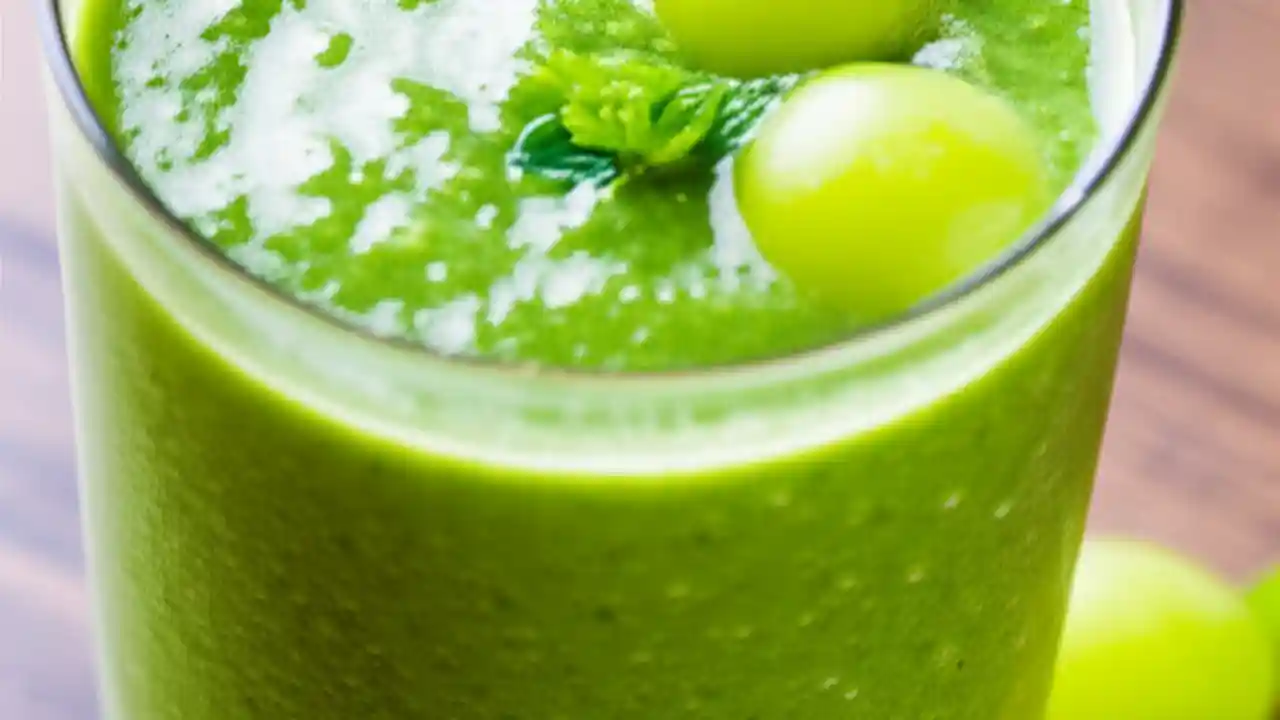The first time I tasted a truly remarkable lobster bisque, I was sitting in a quaint little bistro in coastal Maine, the salty air mingling with the rich aroma wafting from my bowl. It was an ethereal experience – creamy, briny, with an undeniable depth of flavor that spoke of hours of careful preparation. I was captivated. As a recipe developer, I knew immediately I had to recreate that magic in my own kitchen. What followed was a culinary odyssey filled with countless trials, errors, and moments of pure frustration. My early attempts often resulted in thin, watery soups or bisques that lacked that signature rich, sweet lobster essence. I tried different lobster parts, various thickening agents, and a myriad of aromatic vegetables. It was a journey, to say the least.
Then, one chilly evening, after yet another batch that just wasn’t “it,” I had an epiphany. The secret, the truly game-changing element, wasn’t just about using fresh lobster, or even about the roux. It was about meticulously extracting every ounce of flavor from the lobster shells by roasting them first and then simmering them long and slow with a touch of brandy and aromatics. This crucial step creates a deeply concentrated, intensely flavorful stock that forms the very soul of an authentic bisque, ensuring every spoonful sings with the taste of the sea, elevated by a velvety, luxurious texture that comes from a perfectly balanced cream and tomato base. This isn’t just a recipe; it’s the culmination of years of passionate pursuit, designed to bring that Michelin-star experience right to your dining table.
Table of Contents
Family Feedback
“Silas, this lobster bisque is beyond incredible! I always thought making it at home was too intimidating, but your step-by-step guide made it approachable. The flavor from roasting the shells first is a revelation – it’s so rich and decadent, exactly like the one we had on our anniversary. This is now our go-to for special occasions!”
“I made this for a dinner party last weekend, and it was the star of the show. Guests were asking for the recipe before they even finished their first bowl! The hint of sherry really ties everything together, and the texture is just perfect. You’ve truly mastered this, Silas.”
Recipe Card
| Course | Appetizer, Main Course, Seafood |
| Cuisine | French, American, Seafood |
| Featuring | Rich, Creamy, Elegant, Decadent, Classic French, Seafood Delicacy |
| Prep Time | 45 minutes |
| Cook Time | 90 minutes |
| Total Time | 135 minutes |
| Servings | 6 servings |
| Calories | 380 kcal |
| Author | Silas |
Ingredients
- 2 lbs live lobsters (about 2 lobsters, 1 lb each) OR 1.5 lbs cooked lobster meat and 2 lbs raw lobster shells/bodies
- 2 tbsp olive oil
- 4 tbsp unsalted butter, divided
- 1 large yellow onion, roughly chopped
- 2 carrots, roughly chopped
- 2 celery stalks, roughly chopped
- 4 cloves garlic, smashed
- 1/4 cup brandy or cognac
- 1/2 cup dry white wine (like Sauvignon Blanc or Pinot Grigio)
- 6 cups cold water or fish stock
- 1 (14.5 oz) can diced tomatoes, undrained
- 2 sprigs fresh thyme
- 1 bay leaf
- 1/2 tsp smoked paprika
- 1/4 tsp cayenne pepper (optional, for a subtle kick)
- 1/4 cup all-purpose flour
- 1 cup heavy cream
- 1/4 cup dry sherry or dry vermouth
- 1 tbsp fresh lemon juice
- Kosher salt and freshly ground black pepper, to taste
- Fresh chives or parsley, finely chopped, for garnish
Ingredient Notes: For the most profound flavor, live lobsters are unparalleled, as you can use their raw shells and tomalley for the stock. If using pre-cooked lobster meat, ensure you source raw shells from your fishmonger – they are essential for the bisque’s depth. The quality of your brandy or cognac significantly impacts the final aroma; choose something you’d enjoy drinking. Dry sherry is crucial for that classic bisque finish, adding a nutty, aromatic complexity that can’t be replicated.
Instructions
- Prepare the Lobsters: If using live lobsters, humanely dispatch them by quickly inserting a sharp knife into the cross on their head. Twist off the tails and claws. Crack the claws and knuckles. Carefully remove the meat from the tails, claws, and knuckles. Reserve the meat and refrigerate. Break the remaining bodies and shells into smaller pieces. If using pre-cooked meat and raw shells, proceed to the next step with your reserved shells.
- Roast the Shells: Preheat your oven to 400°F (200°C). Spread the broken lobster shells on a baking sheet. Roast for 15-20 minutes, or until they turn a vibrant red and are slightly fragrant. This crucial step deepens the lobster flavor dramatically.
- Sauté Aromatics: In a large, heavy-bottomed pot or Dutch oven, heat 1 tablespoon of olive oil and 2 tablespoons of unsalted butter over medium heat. Add the chopped onion, carrots, and celery. Sauté for 8-10 minutes, stirring occasionally, until the vegetables are softened and lightly caramelized. Add the smashed garlic and cook for another 1 minute until fragrant.
- Deglaze with Brandy: Add the roasted lobster shells to the pot with the sautéed vegetables. Pour in the brandy. Increase the heat to medium-high and carefully ignite the brandy with a long match or lighter (if you’re comfortable with flambéing – otherwise, just let it cook down for a minute or two until the alcohol cooks off). Stir for 1-2 minutes, scraping up any browned bits from the bottom of the pot.
- Simmer the Stock: Pour in the white wine and cook for another 2-3 minutes until slightly reduced. Add the cold water (or fish stock), canned diced tomatoes (undrained), thyme sprigs, bay leaf, smoked paprika, and cayenne pepper (if using). Bring the mixture to a boil, then reduce the heat to low, cover, and simmer gently for at least 45-60 minutes, or up to 90 minutes, to allow the flavors to meld and deepen.
- Strain the Stock: Carefully strain the stock through a fine-mesh sieve into a clean pot or large bowl, pressing firmly on the solids to extract as much liquid as possible. Discard the solids (shells and vegetables). You should have about 4-5 cups of rich lobster stock.
- Make the Roux: In the now-empty pot (or a clean one), melt the remaining 2 tablespoons of unsalted butter over medium heat. Whisk in the all-purpose flour and cook, stirring constantly, for 2-3 minutes to create a blonde roux. This will act as your primary thickening agent.
- Finish the Bisque: Gradually whisk the hot lobster stock into the roux, a little at a time, to prevent lumps. Continue whisking until the mixture is smooth and begins to thicken. Bring to a gentle simmer, then reduce the heat to low. Stir in the heavy cream and dry sherry. Cook gently for 5-7 minutes, stirring occasionally, until the bisque is heated through and slightly thickened to your desired consistency. Do not boil after adding the cream.
- Add Lobster Meat & Season: Dice the reserved cooked lobster meat into bite-sized pieces. Add most of the lobster meat to the bisque, reserving a few pieces for garnish. Stir in the fresh lemon juice. Season the bisque generously with kosher salt and freshly ground black pepper to taste. Adjust seasonings as needed.
- Serve: Ladle the hot Delicious Lobster Bisque into bowls. Garnish with the reserved lobster meat and a sprinkle of fresh chives or parsley. Serve immediately with crusty bread for dipping.
Secrets to the Perfect Lobster Bisque
- The Roasting Revelation: This is my number one secret, and it’s a game-changer. Don’t skip roasting the lobster shells before making the stock. The Maillard reaction that occurs during roasting caramelizes the sugars in the shells, creating a depth of flavor that a plain boiled stock simply cannot achieve. It’s the difference between a good bisque and an unforgettable one.
- The Brandy Flambé (or Gentle Reduction): The initial splash of brandy, especially when flambéed, adds a layer of sophisticated warmth and aromatic complexity. If you’re not comfortable with flambé, simply let the brandy simmer vigorously for a few minutes to burn off the alcohol, leaving behind its wonderful essence. I once skipped this step, thinking it was just for show, and the resulting bisque lacked that subtle, elegant warmth. Never again!
- Slow and Low for the Stock: Patience is your best friend when simmering the lobster stock. A low, gentle simmer for at least 45-60 minutes (even up to 90 minutes if you have time) allows all the flavors from the shells and aromatics to fully extract. Don’t rush it; this is where the backbone of your bisque develops.
- The Perfect Roux Consistency: When making the roux, aim for a “blonde” roux – cooked just enough to eliminate the raw flour taste, but not so dark that it overpowers the delicate lobster flavor. Gradually whisking in the hot stock prevents lumps and ensures a silky-smooth texture. A lumpy bisque is a sad bisque.
- The Sherry Finish: The addition of a dry sherry or vermouth at the end is non-negotiable for a classic bisque. It brightens the flavors, adds a nutty counterpoint, and elevates the overall aroma. It’s that subtle “something extra” that makes people say, “What *is* that incredible flavor?”
Recipe Inspiration & Creative Twists: While this classic Delicious Lobster Bisque Recipe is perfect as is, feel free to get creative. For an even richer texture, you can add a touch of heavy cream to the stock before straining, then blend a portion of the strained vegetables back into the stock. For a spicy kick, increase the cayenne pepper or add a finely minced jalapeño to the aromatics. Garnish with a swirl of crème fraîche and a sprinkle of caviar for an ultra-luxurious touch. This bisque also pairs beautifully with a side of crusty baguette or a light green salad to balance its richness.
Storage Methods: Once cooled, Delicious Lobster Bisque can be stored in an airtight container in the refrigerator for up to 3-4 days. For longer storage, this bisque freezes exceptionally well. Pour it into freezer-safe containers or heavy-duty freezer bags, leaving about an inch of headspace for expansion. It will keep in the freezer for up to 3 months. To reheat, thaw overnight in the refrigerator (if frozen), then gently warm on the stovetop over low heat, stirring frequently. Do not boil after freezing and thawing, as this can cause the cream to separate. You may need to add a splash more cream or stock to achieve the desired consistency when reheating.
Nutrition Facts (Per Serving)
| Calories | Fat | Carbs | Protein |
|---|---|---|---|
| 380 kcal | 30 g | 12 g | 18 g |
Please note that nutrition information is an estimate and can vary based on the specific ingredients used.
Frequently Asked Questions
Can I use frozen lobster for this bisque recipe?
While fresh, live lobster yields the best flavor, you can certainly use frozen lobster tails or meat. However, the true depth of flavor in this Delicious Lobster Bisque Recipe comes from roasting and simmering the raw shells. If using frozen meat, try to source raw lobster shells from your fishmonger or seafood market to make the stock. If raw shells are unavailable, you can still make a delicious bisque, but the lobster flavor will be slightly less intense.
How can I make my lobster bisque thicker or thinner?
To make your bisque thicker, you can either cook it down a bit longer over low heat to reduce it, or you can create a slightly thicker roux by adding a bit more flour to the butter (e.g., an extra tablespoon). If you find your bisque is too thick, simply whisk in a splash more heavy cream, water, or fish stock until it reaches your desired consistency. Remember to taste and adjust seasonings if you add more liquid.
What’s the difference between lobster bisque and lobster soup?
The primary difference lies in the texture and preparation. A classic Delicious Lobster Bisque is traditionally thickened with a roux and finished with cream and sherry, resulting in a smooth, velvety, and luxurious consistency, often pureed. Lobster soup, on the other hand, can be a broader term, sometimes referring to a brothier, less creamy soup that might contain larger chunks of lobster and vegetables, without the same emphasis on a rich, emulsified base.
Can I prepare the lobster stock ahead of time?
Absolutely! Preparing the lobster stock in advance is an excellent way to break up the cooking process and save time on the day you plan to serve the bisque. Once made, the stock can be refrigerated for up to 3 days or frozen for up to 3 months. Simply thaw it in the refrigerator overnight before proceeding with making the roux and finishing the bisque as per the instructions.












